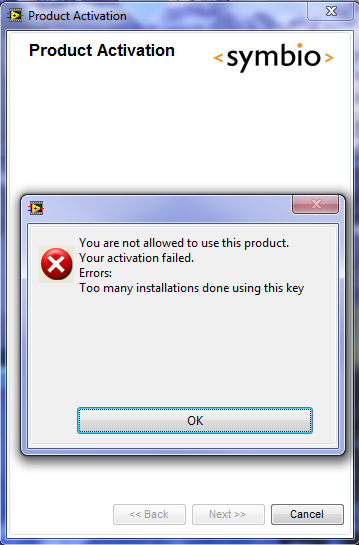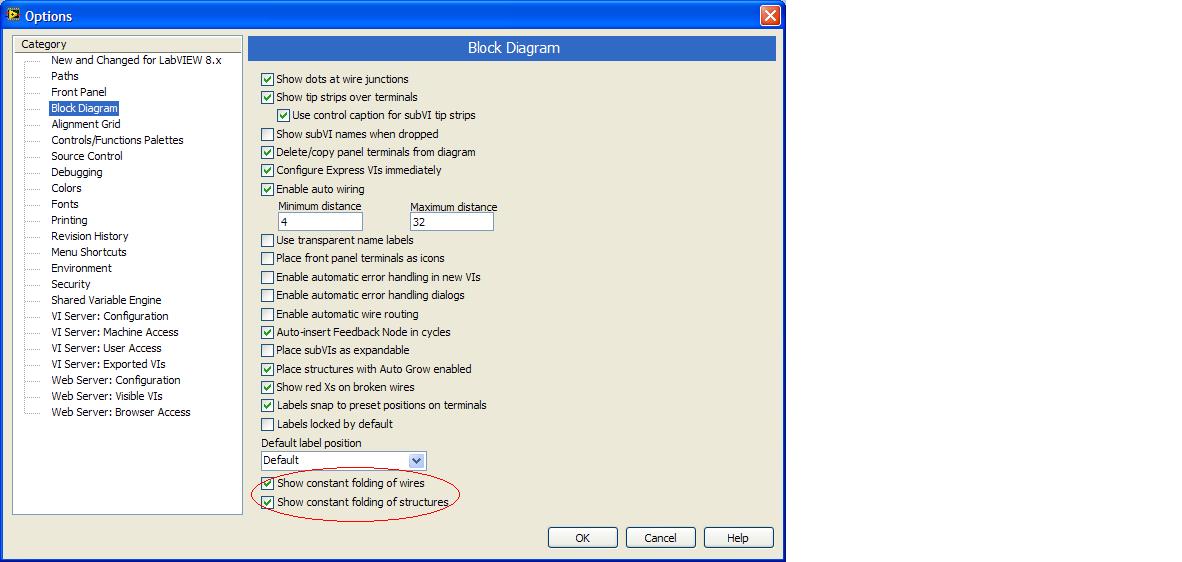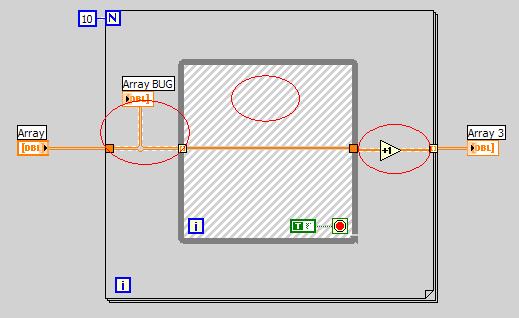-
Posts
36 -
Joined
-
Last visited
Content Type
Profiles
Forums
Downloads
Gallery
Posts posted by daal
-
-
Ok if it's impossible to move the 0px cluster around, I agree with you it's useless.
My use case was an array of cluster and I need to sync it with a List Box. The 1px on the top should fit with my requirement.
Thank you hooovahh
-
Ok, I edited my original post. There's now a second .ctl file there in addition to the first one, and I renamed the first one to reflect that it isn't actually borderless because of the 1 pixel.
Where is the original Post? Where is the second .ctl? ... I'm looking for the 0 pixel border cluster.
Anyone have it in there archive?
Thank you
-
Now available on the web site: http://www.ni.com/trylabview/
-
 2
2
-
-
Finally it was my fault... I was entering the old Community activation COMM-UNIT-YEDI-TION-2011
I'm late in my year count

So use COMM-UNIT-YEDI-TION-2012
Dany
-
I got this error when I want to register Symbio GDS :
So why it's limited in number of activation? for Community Edition?
I just want to see what's new in the current version. I'm not trying to cheat or something.
If it's not possible to activate, what I need to do to uninstall it? Currently I got a dialog that tell me to activate it each time I start LabVIEW.
Any idea?
Thank you
Dany
-
-
Hello, I didn't get any reply to my question, I hope i can get someone opinion here
We use a custom icon editor for many years now and it help a lot to be more productive. Since the introduction of the New NI Icon Editor we continue to use our custom IE but we use the New IE either for API vi with graphics. To do so we need to rename the lv_icon.vi that ship by NI to lv_icon_NI.vi and we called it dynamicaly from our IE. But now the New NI Icon editor is built in .lvlibp and we cannot rename it because it is built. We tried to build NI IE with the source code by renaming lv_icon.vi and conbine it with our IE but this way we can't call the NI IE from our IE. This technique have a side effect to break some tools (NI LVOOP wizard, JGCODE Tools) that call the NI IE with the API.
Some one know how to get a custom IE that can call the NI IE without breaking other tools?
Dany
-
Does anyone have specific documents about "XNode" and "ExternalNode" for LabVIEW FPGA? (hdlnode.jpg, createxnode.jpg)
Look at this
How did you enable the creation of a Xnode and selection of abilities in your Project ?
-
Please vote for this idea to add support to Alpha channel in picture control
http://forums.ni.com...ol/idi-p/917415
Dany
-
Check this resource for more help : http://decibel.ni.co.../docs/DOC-10153
Dany
-
If you add a .MNU to your class you will get the .mnu in the menu ring.
http://forums.lavag.org/index.php?act=attach&type=post&id=6478
And after that when you right click on the reference of your class in BD you will get a new menu.
http://forums.lavag.org/index.php?act=attach&type=post&id=6479
Dany
-
There is some improvement to get good result
http://forums.lavag.org/index.php?act=attach&type=post&id=6164
http://forums.lavag.org/index.php?act=attach&type=post&id=6165
Dany
-
-
QUOTE(AdamRofer @ Apr 2 2007, 03:24 PM)
I'm not sure how far back this goes (probably as far back as the Macroizer thing exists), but this VI appears to run in one instance. Apparently you can have an automatic "macroization" of any VI you want.(This was tested in LabVIEW 8.20)
Step one: take a VI "xx.vi", rename it "xx.vim"
Step two: drag it onto the block diagram
Now this VI is a subVI, but note you cannot double click on it to enter the VI itself. I imagine that all the other problems that plague External Nodes in general exist here also, which might be why this behavior is not advertised. You can still access the VI through the VI Heirarchy, although if you copy the VI around the Block Diagram then you might not see it listed as a subVI of that VI (?!?!). I'm sure a lot more "interesting" results can be found...I really don't know what purpose this could have, but then again the locked VI might have some more stuff in it than just this.
Weird stuff.
Just a note to get this working, you need to enable external node with "ExternalNodesEnabled=True" in Labview.ini
And in my case it doesn't work with drag and drop from explorer, I need to use "Select a VI" from the palette
Dany
-
QUOTE(Aitor Solar @ Feb 28 2007, 05:10 AM)
Good work. But I think the abilities' public names not always match the internal names. For example, the documentation talks about a BuildMenu, BuildMenu2 and BuildMenu3 abilities, but internally we have a BuildPopup (whose documentation seems what is defined as "BuildMenu" in the doc), BuildMenu (whose documentation seems what is defined as "BuildMenu2" in the doc) and BuildMenu3 (this one 's correct). And a "BuildMenu2" ability in an XNode gives an ability-not-recognized error.I suspect NI renamed the abilities for the LV8.2 project manager (and hence their name in the documentation) but internally they retain the LV8 name. Pretty chaotic for us :-(
By the way, I have observed the XNode Manager gives an error whenever you add an ability with an absolute path ("relative path?" unchecked). When the application tries to add the VI to the XNode library, it returns a 56003 error ("Adding this item would cause a conflict with an item already in memory"). Strange.
Saludos,
Aitor
P.S.: XNode Manager 1.4 for CR is on its way.
Thank you Aitor for the update, now it represent the real world of xnodes :thumbup:
-
QUOTE(AdamRofer @ Feb 23 2007, 07:02 PM)
One thing that could be added is the documentation for each ability. Sounds tricky, but then again you can find them here:1) Open Labview 8.x\resources\lvstring.rsc
2) Search for "This is a strict type definition"
3) This refers to the State Ability...the rest follow, separated by x00 or whatever bytes that show up as http://forums.lavag.org/index.php?act=attach&type=post&id=5018
Keep in mind the list has grown in LabVIEW 8.2, so don't get the info from the 8.0 folder!
Hi,
I have extracted the help documentation for the abilities and I have formated in a word document with hyperlinks.
http://forums.lavag.org/index.php?act=attach&type=post&id=5045
Dany
-
QUOTE(Aitor Solar @ Feb 21 2007, 07:15 AM)
Thanks Aitor, Great tool :thumbup:
QUOTE(Aitor Solar @ Feb 21 2007, 07:15 AM)
2) Maybe the abilities list is not complete (but I have tried all the proposed til now). If you find other abilities, please tell me.You can find all the Abilities vi's in <LV8.2>\resource\Framework\Providers\xi\xnode.llb
Dany
-
Don't worry Dany - I'll step up and accept the award on your behalf :thumbup:
crelf is the first to ask for the beer... you get the pitcher :thumbup:
-
Great work, Dany! I hope you can make it to NI Week to collect your prize

I don't think I will be at NI Week this year. I made its for the pleasure, not to get the prize

-
Here are the rules:
1) Create an XNode (not an External Node) that implements the following code, in order to get the default value of anything:
2) License your VI under the BSD license.
First one to complete this challenge will get a pitcher of their favorite beer at Gingerman, this year at NI Week (and possibly have thier VI included in the OpenG Toolkit).
Cheers,
-Jim
Hi, there is my xnode. Finally it's an easy one, you don't have to do any scripting to get the default data. :thumbup:
Download File:post-223-1170317628.llb
have a nice day
Dany
-
Thank you all for the replies :thumbup:
Dany
-
Hi, I found that if you enable the Show folding feature the error don't occur anymore :thumbup:
Dany
-
Hi Dany,
in my opinion a user who knows how to execute an executable from the file browser knows how to run an executable in another way. Or are you disabling the windows key, ctrl-alt-del, ctrl-esc? Might it be possible to create a user account with almost no rights just to run your program? Maybe you can use the .net browser and run that one as a low-righted user?
Ton
I used a simple stategy to lock the user from executing other executable. I start my app at startup and I kill explorer.exe and for the operator account I restrict the acces to taskmgr.exe to be executed. That way you can't execute any other EXE and only if you don't have any File Dialog used in your App.
Dany
-
Why do you want to remove the *.* file pattern?
In my case it's a security issue (exe can be executed by the file dialog), but after some test even when you remove the *.* from the file pattern, you can type it by your self and got all the file listed

The only way is to create my own File Dialog
Thank you for your help
Have a nice labor day
Dany








Your experience: Class holding instances of its type in its private data?
in Object-Oriented Programming
Posted
To resolve this problem, I cast the DVR into a U32. So in your private data of your class you will have only a U32 so not anymore recursive loading. To access your data you will need to recast the U32 to DVR.